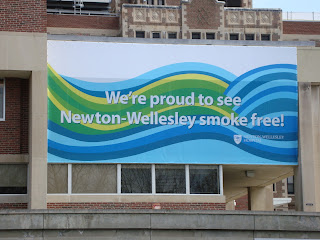Printers have little control over the colors and tones that
will print from a pdf file.
Typically you get what is in your file unless you ask for a
global color correction.
If two files are set up differently to print black - the
results will print differently. Large black background areas with a grey mix
instead of black will print noticeably different.
Also if 2 different output devices are used to print the
same file on 2 different types of material, say vinyl and foamcore, the results
of black will still be significantly different.
Pdf’s from RGB artwork will also print differently than CMYK
pdfs. 100% black will not always
yield a rich black. A mix of other
colors will make the black look better.
Here is an explanation of 3 types of black.
Andrew Kelsall Design writes:
“Neutral
Rich Black (also known as Rich
Black)
| C40 M30 Y30 K100 : This type of black is roughly comprised by the preceding
color combination, but varies between designers’ personal preference.
Registration
Black | C100 M100 Y100 K100 : This mix is comprised of
the maximum amount of cyan, magenta, yellow and black.
Flat Black | C0 M0 Y0 K100 : This black is just made up of
100% of the black channel, with no other ink in the mix. Also known as Standard black.”
The printer being used will also have an affect on the
blacks depending on whether it is a 4/C or 6/C printer. The material being printed can also have
an effect too.
PDF’s saved differently or being saved using 2 different
versions of Acrobat can print differently
Quick low-cost print jobs with no lead-time do not afford
the luxury of printing proofs for checking these things prior to the final run. Make sure you have set up your files
correctly and communicate with your printer your final expectations.
 All of these variables can affect the black color. Contact ICL Imaging for more information on "How to Prepare Your Files"
All of these variables can affect the black color. Contact ICL Imaging for more information on "How to Prepare Your Files"
·
How the PDF was saved
·
Are the black levels the same on all documents
·
Printing on Different media
·
Are they being printed as grayscale
·
Different Printers, Commercial Press, Ink Jet,
Latex, Laser Printer
·
File set-up as 100% black, a grey mix or black
with a color mix
·
Files saved differently
·
Reproduced from RGB artwork or CMYK










